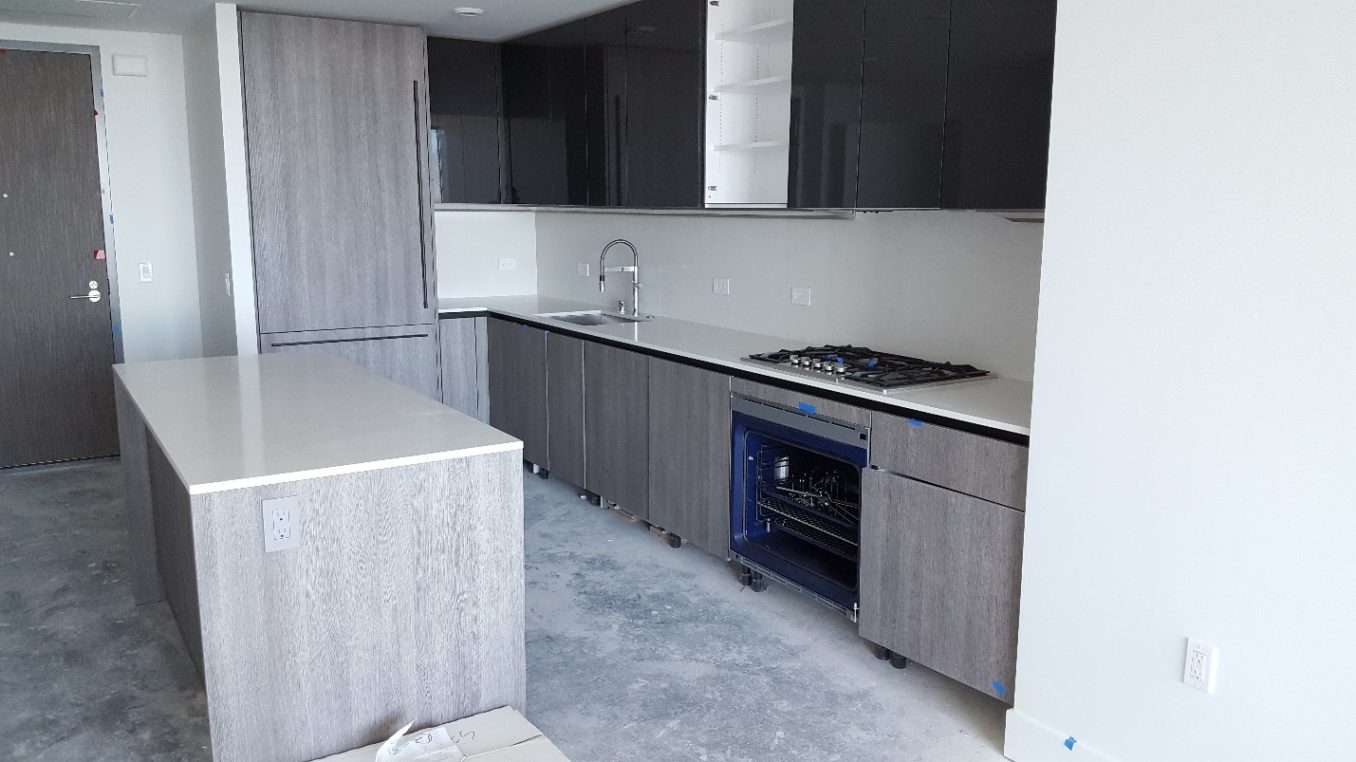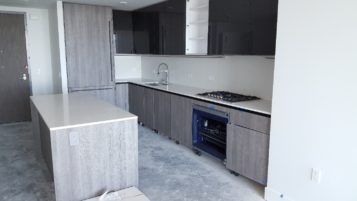
By: Casey Curren
The punchlist phase is not exactly everyone’s favorite part of a project. All the luster and shimmer of a new and exciting project is long gone. Most of the work is in place, and now it is down to finishing the small details. I recently worked on a high-rise residential project, which had 656 high-end units and amenities. Following is my experience on what has worked for me and what areas leave room for improvement.
Start Planning for the End Earlier
During the punchlist stage, as a superintendent it feels as if we are managing subcontractors who did not QA/QC their own work or even worse complete their work. When I hear subs say, “Oh we’ll pick it up during the punch(list) process,” it drives me insane and motivates me to make sure there is more of an emphasis on finishing at a higher standard rather than just starting work to only get close to finishing.
So how do we get the subcontractors to QA/QC their own work when we know the foremen are usually scrambling to keep their guys busy and troubleshooting issues? – which means that checking the quality of the work is not on the top of their to do list.
Potential solution: Identify a process where subcontractor(s) sign off, verifying that their scope is 100 percent complete and the quality of work is up to project standards during construction. This verifies they completed their work and identifies potential issues earlier if work is not completed. This can be as simple as an email from one of our subs informing us that all work has been completed. Sounds simple, but if a sub has to put something in writing they will be more apt to verify it.
Schedule & Manpower
Make sure the project schedule durations are realistic and the subcontractors’ punchlist workforce is clearly defined as separate from production crew in each of the subcontractor’s contracts. Having the subs’ manpower clearly defined as separate from production helps because the subcontractors, more often than not, try to sneak in punchlist work when there is lull in the production work—which does not help to maintain the punchlist schedule.
Protection for Finishes—Buyout & Maintenance
During the buyout phase, the project team needs to identify finishes that need protection based on the timing of install and their vicinity to adjacent trades that will still be completing work. Once you’re over the hurdle of getting the protection installed—with verification documented by subs via email with pictures—the managing of the protection during active construction starts; this is the hardest part of the process. When the trades start running through units or areas, the protection is not always in the same state as when it was first installed. Having an assistant superintendent do a sweep of the units or areas where protection is installed can be a method of improvement to verify that protection is still in the correct place during construction.
Software & Technology
As time goes by, more and more owners, general contractors and subcontractors are becoming tech savvy, which is helping us document and distribute information. However, there still needs to be some fine tuning before it gets to the point where we, as supers, don’t have to walk almost every punch item with the sub to make sure they know exactly what they are supposed to complete and get signed off.
I have used Prolog Mobile and PlanGrid on projects, and they both have pluses and minuses. Talking to the pluses, PlanGrid gives you the ability to mark up a drawing and identify exactly what the item is on a drawing, as well as tag a picture to the item, making it easy on the sub to walk and clearly see what the issue is. Prolog Mobile gives you the ability to enter a lot of information and have the ability to filter the information in order to run reports, which is a better tool for larger size projects. Out of the two applications, PlanGrid is more user friendly and the subs have an easier time identifying their items off a report.
It is also important early on in a project to identify what software and technology will be used for the punchlist process and how it will be implemented in the field; e.g., iPads. Making sure the owner/architect has either used the software, or is on board with learning how to use the agreed upon software, is essential to the project as well. Suggested software options: PlanGrid, Prolog Mobile, FieldWire, Procore.
Preparing for the End
These days, it seems like none of the high-end finishes are local, which puts us in a position of constantly thinking within an 8-12-week buffer because, if something is damaged, never shows up or is late, it will take a long time for anything to hit the jobsite once it is reordered. With that said, we need to ensure that parts are reordered soon enough as to not hold up the turnover of a unit or area.
One thing that would have helped me would have been to compile a detailed “finishes” matrix (cabinets, doors, stone, etc.) ahead of the punchlist process. Thinking at approximately the 50-60 percent stage would have helped us identify what needed to be reordered because of trade damage or shipping issues to have it onsite in time and installed ahead of handover to the owner.
Contract Scope Refresher
I think it would be helpful to have a quick refresher session with the Punchlist Team to review contracts in order to get the troops ready for the battle. More often than not, the person running the work in the beginning is not the person running the punchlist, so it is good to have a refresher session to make sure the contract scope is being met. And, if there are scope gaps, they need to be addressed as soon as possible as to not delay the punchlist process.
At a minimum, review if the manpower supplied is sufficient to meet the schedule durations. How many punchlist passes does your subcontractor owe?, how much extra material is owed? and has the owner identified an area where they want their extra stock stored?
It may not be the most glamorous part of the job, but following the punchlist process will ensure a finished product is delivered to the client/owner that better meets the contract scope.
Casey Curren is a superintendent with Lendlease with over 15 years of experience in construction. He has worked on a variety of complex projects, from downtown high-rises and large infrastructure projects, to tenant improvements for healthcare and pharmaceutical clients.




 Join our thriving community of 70,000+ superintendents and trade professionals on LinkedIn!
Join our thriving community of 70,000+ superintendents and trade professionals on LinkedIn! Search our job board for your next opportunity, or post an opening within your company.
Search our job board for your next opportunity, or post an opening within your company. Subscribe to our monthly
Construction Superintendent eNewsletter and stay current.
Subscribe to our monthly
Construction Superintendent eNewsletter and stay current.